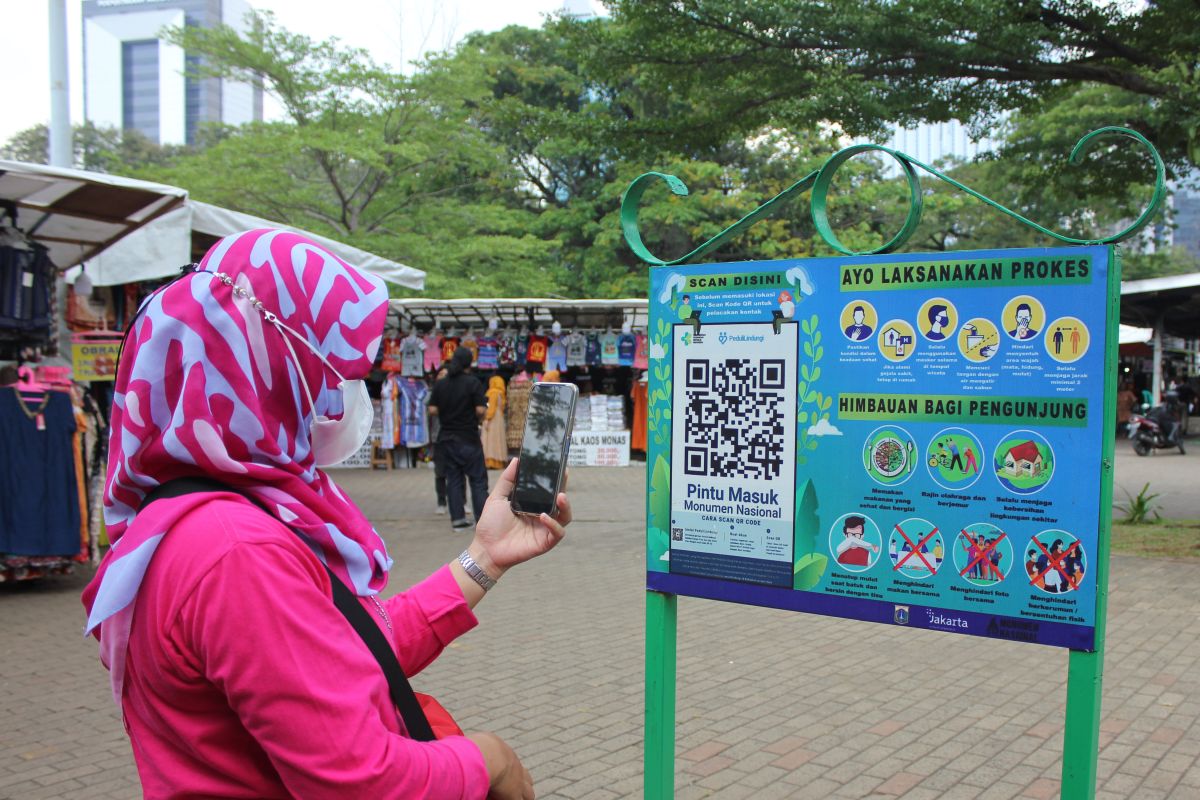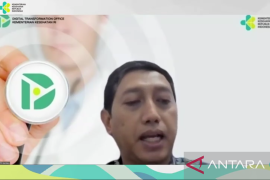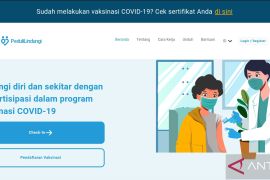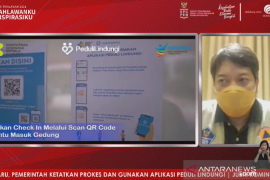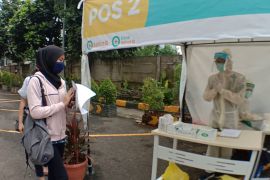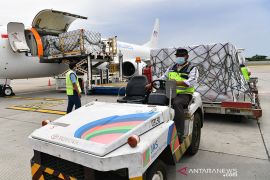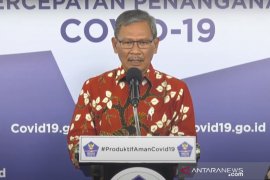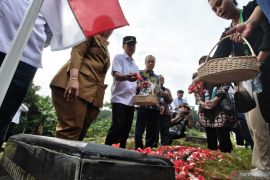The use of technology in tracing and tracking COVID-19 is beneficial for strengthening pandemic surveillance to optimize health interventions, both for preventing transmission of the disease and for treating patients.
Indonesia launched the PeduliLindungi application in March 2020 as a COVID-19 tracing application that is officially used for digital contact tracing in the country.
The application uses the Global Positioning System (GPS) feature to track the location of its users. Each user's smartphone will exchange anonymous identities if they are in the same GPS range and store the data for 14 days.
The tracing is conducted to find whether someone has come in close contact with a suspected or confirmed COVID-19 patient.
The application can also notify users when they are in the red or green zone area, along with data on COVID-19 cases in the area. Users can also download vaccination certificates through the application.
PeduliLindungi also has a feature that provides access to online doctor consultation (telemedicine) services that can be used by people experiencing COVID-19 symptoms or are in self-isolation.
Since its launch, PeduliLindungi has continued to be improved and experienced changes in its features to optimize its use.
The Ministry of Health has improved services in the PeduliLindungi application by adding the Sijejak feature to track close contacts via Bluetooth, so that the application can identify close contacts within a distance of fewer than two meters.
The authorities can trace close contacts easier by using the Sijejak feature that adopts the BlueTrace method used by the Singapore Government's COVID-19 contact tracing application, TraceTogether.
The government has ensured that the data stored in the application through the feature is protected through encryption.
According to Head of the Research Center for Artificial Intelligence and Cybersecurity at the National Research and Innovation Agency (BRIN), Anto Satrio Nugroho, pandemic surveillance involved several technologies, and there is still room for several improvements, such as in PeduliLindungi.
The PeduliLindungi application is used to tackle the spread of COVID-19 and other infectious diseases by tracing, tracking, warning, and fencing, as well as promoting the adoption of new habits related to the pandemic.
"When we enter a place, we use a smartphone and scan (the PeduliLindungi barcode) to inform (about) the status of COVID-19, which is attached to our identity," he stated.
The information collected includes name, personal identity number, real location data, user activities data, contacts, gender, health conditions, vaccinations, and medical history.
The data collection, analysis, and visualization utilize technology 4.0, specifically artificial intelligence (AI), big data, and the internet of things (IoT).
One of the important steps to take, for instance, is the issuance of personal identity numbers using AI and big data technology to collect citizens' biometric data -- 10 fingerprints, irises of the left and right eye and face -- as well as a deduplication process to avoid multiple identities.
Fingerprint, iris, and facial recognition biometric technologies are fields of artificial intelligence. Data collection, visualization, and analysis utilize big data and IoT technologies.
AI, big data, and IoT technologies are used for the issuance of accurate population data and are helpful for monitoring the spread of COVID-19 or pandemic surveillance.
Nugroho believes a loophole exists in this related to citizens and their smartphones. For instance, when people are scanning the PeduliLindungi barcode, there is no authentication process to check whether they are using their own smartphone with their own PeduliLindungi account or not.
It is possible that the smartphone is used by another person whose real identity is actually different from the identity on the PeduliLindungi application.
There are three authentication protocols based on what is owned, what is known, and biometrics pertaining to the fingerprint, face, and iris modalities.
Authentication that is appropriate for this purpose is one that does not require touch to avoid virus transmission, so that facial and iris recognition can be used.
Iris recognition can now be conducted at a distance that is far enough, or more than one meter.
According to Head of the Electronics and Informatics Research Organization of BRIN, Budi Prawara, AI and big data for COVID-19 surveillance must also be able to ensure that the technology implemented is not "tricked" by some people.
For instance, to ensure that a person, who tests positive, stays self-isolated at home and remains homebound, one more device can be added in the form of an IoT-based wearable device.
The wearable device, in the form of a smart wristband, should always be attached to the patient and connected to the patient's gadget. Attempts to forcibly remove the wearable device will trigger a warning or alarm to the supervisor.
BRIN has developed a wearable device called SiMonic. The implementation of this innovation needs policy support from the central government.
The use of technology 4.0 is needed to process identity data, health data, and population authentication, which are essential for current and future pandemic surveillance.
The PeduliLindungi application is expected to continue to be refined to improve its performance and benefits in supporting contact tracing and pandemic surveillance efforts in the country.
Related news: Master digital culture through PeduliLindungi use for oil purchase
Related news: PeduliLindungi to become citizen health application: Minister
Editor: Rahmad Nasution
Copyright © ANTARA 2022
